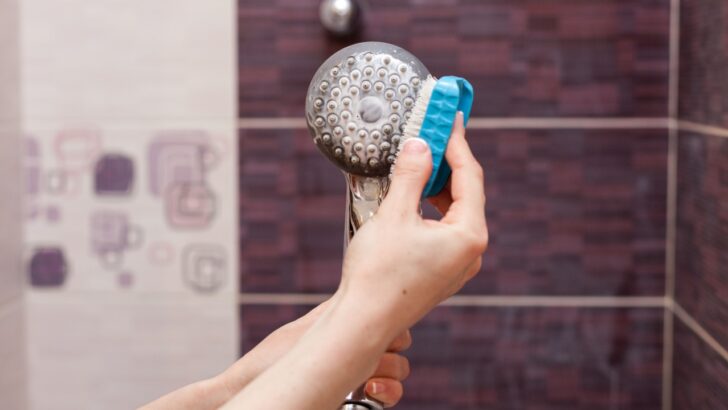Most of us hop into the shower expecting a fresh, clean start to the day. But if your showerhead hasn’t been cleaned in a while, it could be doing more harm than good. Experts at Plumbworld warn that showerheads should be cleaned at least once a month, yet many people wait much longer.
The result? A hidden breeding ground for bacteria, mold, and stubborn limescale buildup. So what happens if you neglect this simple task? Let’s break it down week by week — and show you how to fix it before it’s too late.
Week 1: The Build-Up Begins
Even if your showerhead looks clean, mineral deposits from hard water start forming inside the nozzles within days. This buildup provides the perfect environment for bacteria and mold spores to take hold.
At this stage, you won’t notice any changes, but trouble is already brewing. A simple wipe with a damp cloth can help remove early buildup and keep things in check.
Week 2: Bacteria Moves In
By the second week, bacteria are thriving inside your showerhead. Research shows that showerheads can harbor Mycobacterium avium, a bacteria linked to respiratory infections — especially for those with weakened immune systems.
You may start noticing a musty or stale smell when turning on the shower, along with slightly reduced water pressure due to mineral blockages. A quick soak in white vinegar for 30 minutes can kill bacteria and break down early limescale, preventing further issues.
Week 3: Limescale Takes Over
By week three, the mineral deposits have hardened, making them tough to remove. The water may start spraying unevenly, and your showerhead is now working harder to push water through clogged nozzles.
If left untreated, this buildup can even increase energy bills for power or electric showers. To prevent this, soak the showerhead in vinegar overnight and scrub it with an old toothbrush to remove stubborn deposits.
Week 4: The Hidden Health Hazard
After a month, your showerhead has become a bacterial hotspot. Studies have found unclean showerheads can contain mold spores that trigger allergies and asthma, Legionella bacteria, which can cause Legionnaires’ disease, and black slime inside the nozzles — a biofilm of bacteria coating the interior. Signs that your showerhead needs a deep clean include water having a slightly off smell, a noticeable drop in pressure, and brown or white deposits around the nozzles. At this stage, a full deep clean is necessary to remove bacteria and buildup.
Beyond One Month: Plumbing Problems Begin
Neglecting your showerhead for over a month can cause serious issues, including clogged nozzles that increase water pressure inside pipes, leading to leaks, bacteria spreading to your plumbing and contaminating your water system, and severe limescale blockages that can permanently damage your showerhead, forcing you to replace it sooner than expected.
If the buildup is severe, remove the showerhead and soak it overnight in a mixture of white vinegar and warm water. For extreme cases, a descaling product may be necessary.
The Best Way to Clean Your Showerhead
To keep bacteria and limescale at bay, Plumbworld experts recommend cleaning your showerhead once a month using this simple method. First, remove the showerhead if possible and soak it in white vinegar for at least 30 minutes, or overnight for heavy buildup. Then, scrub it with an old toothbrush to remove loosened limescale, rinse thoroughly, and reattach.
For fixed showerheads, fill a plastic bag with vinegar, tie it around the showerhead, and leave it to soak overnight.
The Bottom Line
“Your shower is supposed to keep you clean, but if you don’t maintain your showerhead, it could actually be doing the opposite,” says a Plumbworld spokesperson. “Regular cleaning keeps bacteria and limescale at bay, ensuring better water pressure, a longer-lasting shower, and a healthier home.”
If you can’t remember the last time you cleaned your showerhead, consider this your sign to give it a good soak. Your future showers (and your health) will thank you!


